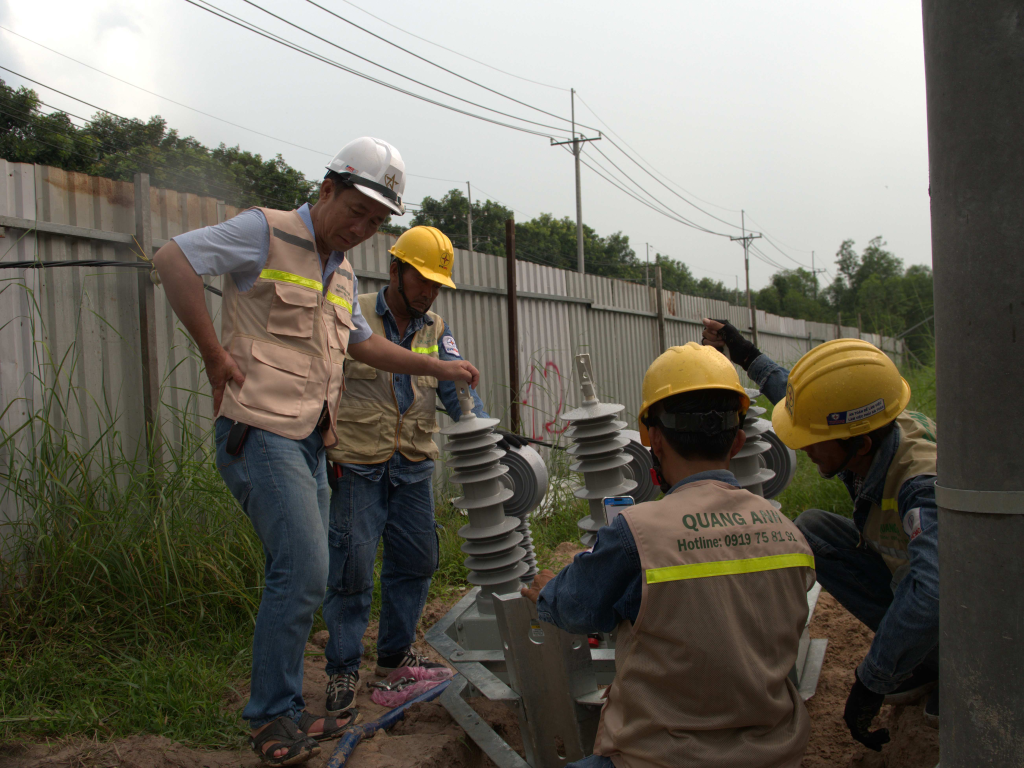News
Factory Construction Process in Vietnam: Steps and Standards to Know
The process of factory construction in Vietnam includes stages from survey to completion, adhering to technical, safety, and environmental standards to ensure quality and investment efficiency.
Survey and Construction Planning
The first step in the factory construction process in Vietnam is the survey and construction planning. This includes surveying the location, site, and geology of the area. The engineering team proposes design solutions that meet the architectural and technological requirements of the factory, from foundation structures to technical infrastructure. Ensuring compliance with environmental protection and fire safety standards is also a top priority.
Surveying and construction planning is a fundamental step to determine natural conditions and factors affecting the project. An effective survey process ensures that the project proceeds smoothly from start to finish, fully meeting all construction standards.
- Establishing and Approving Survey Task
- The survey task must be carefully prepared, based on information such as the type of project and technical requirements.
- Usually, the design contractor will undertake this task.
- Establishing and Approving the Survey Technical Plan
- This plan includes the basis for the plan, component tasks, and applicable standards.
- The survey contractor is responsible for developing a plan that fits the prescribed task.
- Conducting Construction Surveys
- Activities such as information gathering, mapping, and geological testing are conducted to ensure comprehensive data.
- Inspection and Approval of Survey Results
- The result must undergo correct procedure inspection and meet all technical requirements.
Main Contents of the Survey Technical Plan
- Plan Basis: Determined based on the established task and the area’s geological survey.
- Components and Work Volume: Detailed listing of tasks to be performed.
- Methods and Equipment: Appropriate equipment and methods are selected to optimize the survey process.
- Technical Standards: Strict compliance with technical regulations to ensure accuracy and safety.
- Implementation Organization: Clear assignment of responsibilities to team members.
- Execution Timeline: Detailed planning of the schedule and job sequence.
- Safety Measures: Priority given to environmental protection and labor safety measures.
Purpose and Scope of Survey
- Purpose: Ensure design and construction of the project according to standards and client requirements.
- Scope: Applicable to construction projects from small to large scale.
Types of Surveys
- Geological Survey: Assess geology and other geographic phenomena.
- Hydrological Survey: Detailed analysis of the area’s hydrology.
- Geophysical Survey: Use advanced tools to collect accurate parameters.
To ensure the project runs smoothly, the survey process and planning must strictly adhere to existing standards and legal regulations.
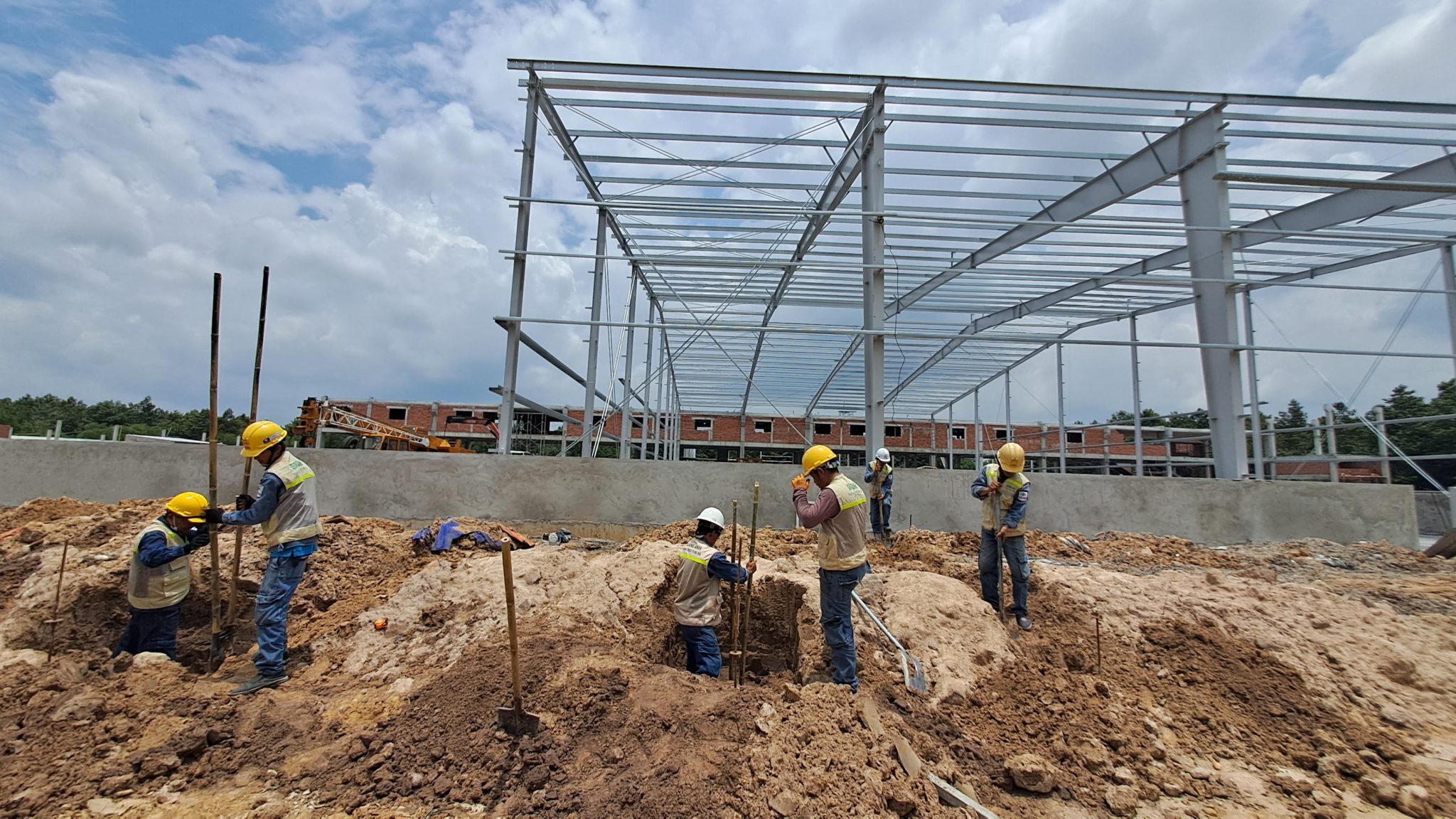
Technical Design and Detailed Execution in Construction and Energy
Technical design and detailed execution is the next step. At this stage, the work focuses on detailed design of foundations, bases, steel structures, and key components of the workshop. QCVN standards are applied to ensure the design matches local ground conditions and meets safety, durability, and cost-saving requirements.
Technical design and detailed execution play an important role in the construction and energy sectors, especially when technical standards and regulations such as QCVN are applied to ensure the project’s safety and efficiency.
Technical design is the stage of realizing the initial plan, ensuring that all technical solutions and materials such as steel structures and foundation plans are applied in accordance with current standards. This includes selecting construction materials and construction techniques accurate to the specific ground and environmental conditions of the area.
Detailed construction design follows technical design, providing a set of drawings that particularize all technical specifications and procedures. These are indispensable documents for actual construction activities, acting as a guide to carry out projects precisely from the foundation to all technical components.
The construction design process particularly emphasizes three main steps:
- Basic Design: At this stage, the overall design plan is determined, creating a premise for subsequent stages.
- Technical Design: Specifies technical elements from the basic design, combined with selecting the necessary materials and technical standards to prepare for construction.
- Detailed Execution Design: Provides comprehensive drawings, detailing technical factors and materials, to guide accurate actual construction.
The important objective of execution design is to ensure accuracy and safety in construction implementation, and also provides the basis for construction cost projection.
Following the correct process and controlling construction techniques are decisive factors for the success of each project, ensuring that buildings achieve the highest technical and economic efficiency.
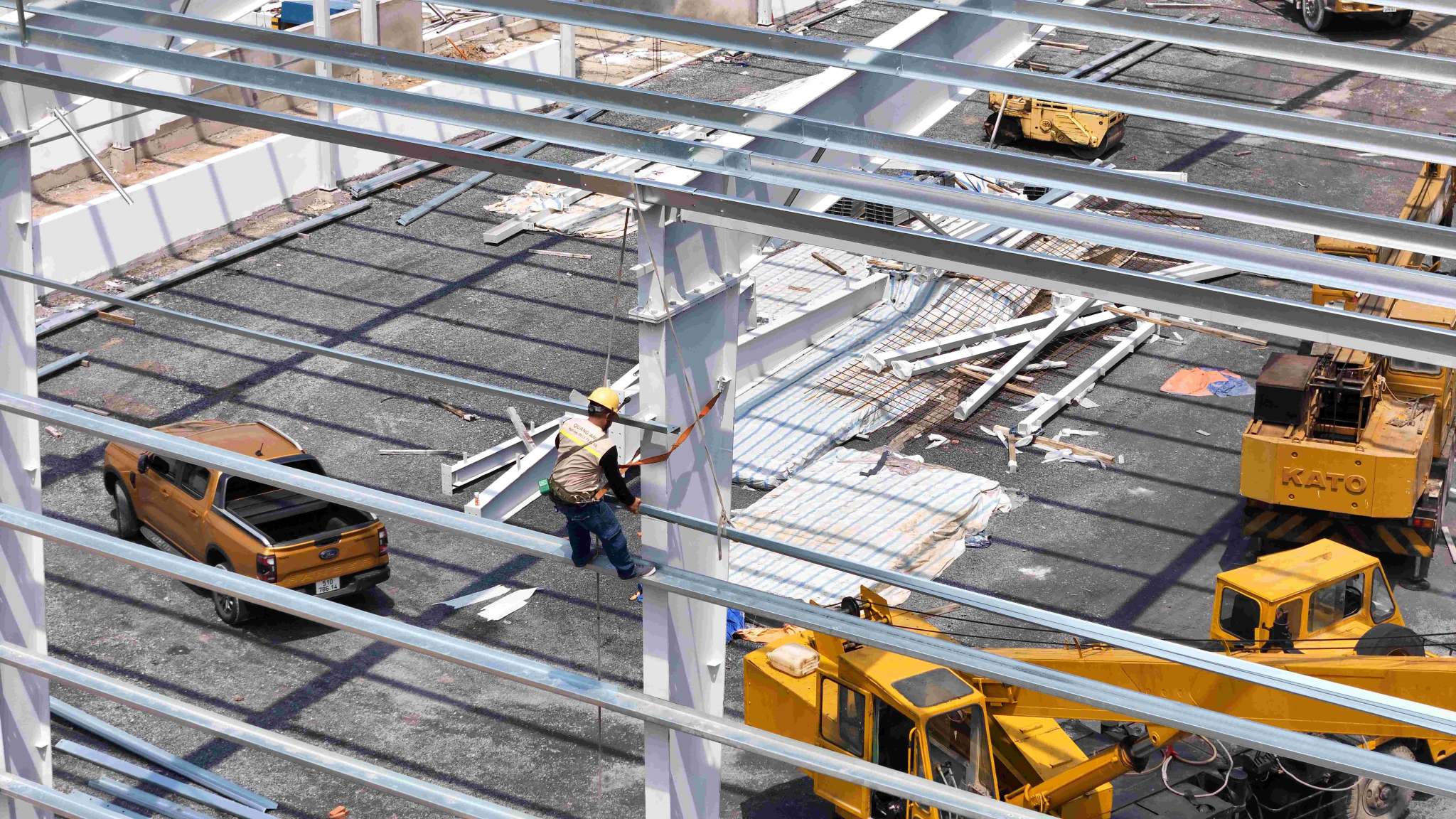
Design Approval and Building Permits
Design approval and building permit applications are crucial steps in the factory construction process. This process requires the submission of design records to authorities for assessments on technical, fire safety, environmental protection, and construction planning. The documentation should include an investment certificate, land use documents, and related fire safety documents. Obtaining building permits from local authorities is essential before project commencement.
In the construction process, design approval and building permit applications play a crucial role in ensuring the project’s legal and safety aspects.
Construction Project Design Steps
The construction project design process can be flexibly adjusted from one to several steps, suitable to the project’s scale and characteristics. The three most common steps are:
- Basic Design: This phase determines the plan, function, and preliminary technical solutions of the project.
- Technical Design: Details the basic design, determining specific construction techniques.
- Execution Drawing Design: Provides detailed drawings for construction activities.
The investor must prepare full design records, which may involve hiring professional contractors to perform this task based on a contract.
Design Verification, Appraisal, and Approval Process
The construction design records must have elements such as design explanation, design drawings, survey materials, construction cost estimates, and technical instructions. The design verification process is performed by local professional authorities with clear timelines:
- 40 days for Grade I and special-grade projects.
- 30 days for Grade II and III projects.
- 20 days for other projects.
This procedure must comply with the Construction Law 2014 and related guiding documents, such as Decree 15/2021/ND-CP and Circular 18/2016/TT-BXD.
Construction Design Adjustments After Approval
The approved construction design can only be adjusted if there are changes in the investment project or requirements to ensure the project’s quality and efficiency. Adjustments must be verified and re-approved if they affect important technical criteria.
Building Permits
Building permits are essential documents ensuring the project is carried out according to approved designs. Investors need to prepare necessary documents like construction permit applications, design drawings, and proof of land use rights. In some special cases under the Construction Law 2014, some projects may be exempt from building permits.
Main Legal Bases
The design approval and building permit application process is based on important legal documents such as Construction Law 2014, Decree 15/2021/ND-CP, Circular 18/2016/TT-BXD, and Decree 59/2015/ND-CP.
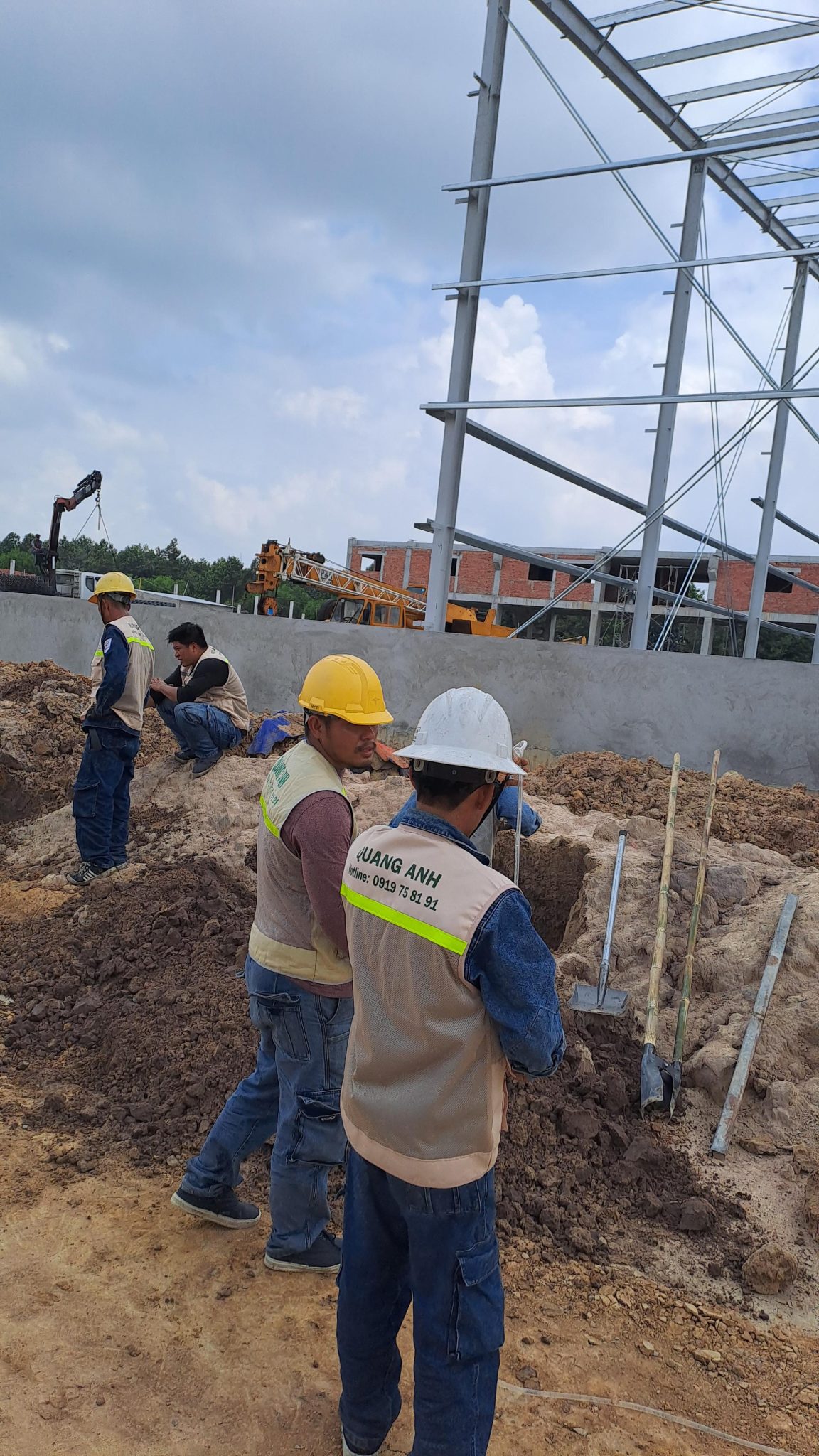
Construction and Factory Completion
Construction and completion include multiple stages, from site preparation, foundation construction, and factory base to assembling the workshop structure and finishing ancillary items. The construction process must follow approved drawings, use high-quality materials, and implement environmental protection and safety measures. Checking and managing progress and construction quality at each stage is necessary to ensure the project meets standards.
Construction and completion of the factory is a complex and precise process to ensure quality, safety, and economic efficiency for businesses. Below are the phases and contents to focus on during the construction process.
1. Preparation and Rough Construction Phase
-
Complete Technical Design Records: This is the first and critical step to ensure construction aligns with the design. The records include detailed structural drawings and electrical systems of the factory.
-
Constructing Concrete Frame Structures, Walls, and Partitions: This phase directly determines the quality, longevity, and safety of the work. Main tasks include building foundations, beams, and floors.
-
Inspection and Acceptance of Rough Construction Items: The inspection includes checking formwork, rebar, and concrete to ensure all align with the prescribed dimensions and quality.
2. Construction of Technical MEP Systems
-
Install Water Supply and Drainage, Electrical, and Auxiliary Systems: Performing construction of the electrical and mechanical system is a crucial step to ensure factory operation, involving electrical, water, fire protection, and lighting systems.
-
Inspection and Calibration of MEP Systems: Ensure systems run smoothly, meeting safety standards as per the approved design.
3. Masonry and Plastering Work
-
Check and Build Walls, Doors: Ensure precise dimensions for basic items and install electrical systems within walls.
-
Wall Plastering and Floor Screeding: Ensure mortar quality is correct and treat wall surfaces to enhance adhesion for subsequent layers.
4. Interior and Exterior Finishing Work
-
Install Gypsum Ceilings and Decorations: After completing masonry and plastering, the ceiling must be covered with gypsum for aesthetics.
-
Waterproofing and Installing Equipment Systems: Increase the project’s lifespan by waterproofing the restroom and installing necessary sanitary equipment.
-
Tiling and Painting for Completion: This phase creates the final beauty and robustness of the construction.
-
Install Doors and Safety Railings: Ensure aesthetics and safety when the project comes into operation.
5. Inspection, Acceptance, and Handover of the Project
-
Check and Accept All Project Items: Ensure compliance with technical and safety standards.
-
Handover Project to Investor: Only takes place after fulfilling all technical and legal requirements.
6. Maintenance and Repair of the Project
Regular maintenance is indispensable for stable operation of the project.
7. General Notes in Construction and Completion
-
Plan in Detail: Effective construction requires concrete and clear planning.
-
Comply with Material Mixing and Use: Ensure the long-term quality of the work.
-
Surface Preparation Before Completion: Essential to increasing adhesion for paint and other finishing layers.
-
Use Epoxy Paint for Factory Floors: To meet hygiene and safety requirements.
Overall, each phase in the construction and completion process of factory construction needs to be closely monitored to ensure the project’s success.
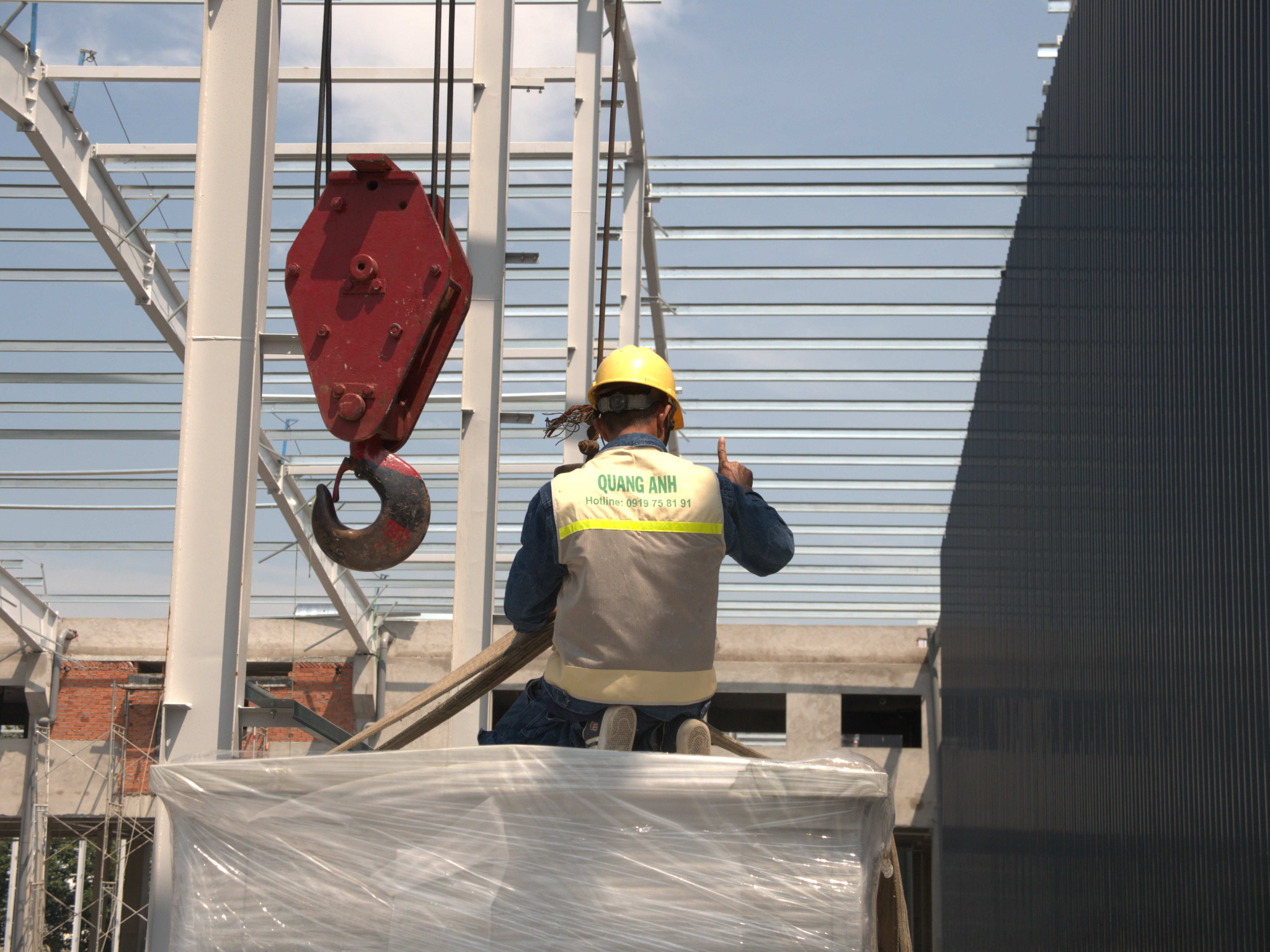
Inspection and Factory Handover
Inspection and handover is the final step of the factory construction process in Vietnam. After the project is complete, the investor coordinates with state management agencies to conduct inspections of construction, fire safety, and the environment, aiming for official operational licensing for the factory. This ensures all technical and legal standards are met, allowing the factory to operate safely and efficiently.
In the construction and energy sectors, inspection and factory handover is an indispensable process to confirm the project’s quality and operational capability before putting into use. The first step of the inspection process is a comprehensive inspection of work, components as per construction law.
Order and Procedures of Inspection
- Conduct inspection for each task and component. For hidden parts like foundations, inspection must be conducted before proceeding with further construction.
- The investor arranges a comprehensive project inspection upon completion, involving the investor, construction contractors, construction supervision consultants, and design contractors if any.
- The inspection content includes: checking current status, construction quality, testing, trial operation, and ensuring labor safety and fire protection.
The inspection process results are drawn up as a document signed by relevant parties, ensuring responsibility for the verified construction quality. Upon completing this phase, the process will move to completion procedures.
Factory Completion Process
- Prepare Completion Records: Completion drawing, test reports, acceptance document, construction permit, and necessary documents from authorities.
- Submit Records to Competent Authorities: Based on the project’s scale, submit to the Management Board of new urban areas, industrial zones, or the local Construction Department.
- Authorities Verify Records and Inspect: If records are valid and the project meets standards, a completion certificate will be issued. Otherwise, additional documents are needed.
- Fulfill Financial Obligations: Includes paying related fees and taxes before receiving the completion certificate.
Conditions for Inspection and Completion
- Components have been inspected following design standards and legal regulations.
- No existing issues have made an impact on safe use during operation.
- Completion records must be full, accurate, and legally valid.
Participants in Inspection and Completion
- Investor
- Construction contractor
- Construction supervision consultant
- Design contractor (if required)
- State management agencies
The inspection process and completion certification are decisive steps for legal assessment and readiness for factory operation. They play a significant role in establishing safety and feasibility for long-term business operation.
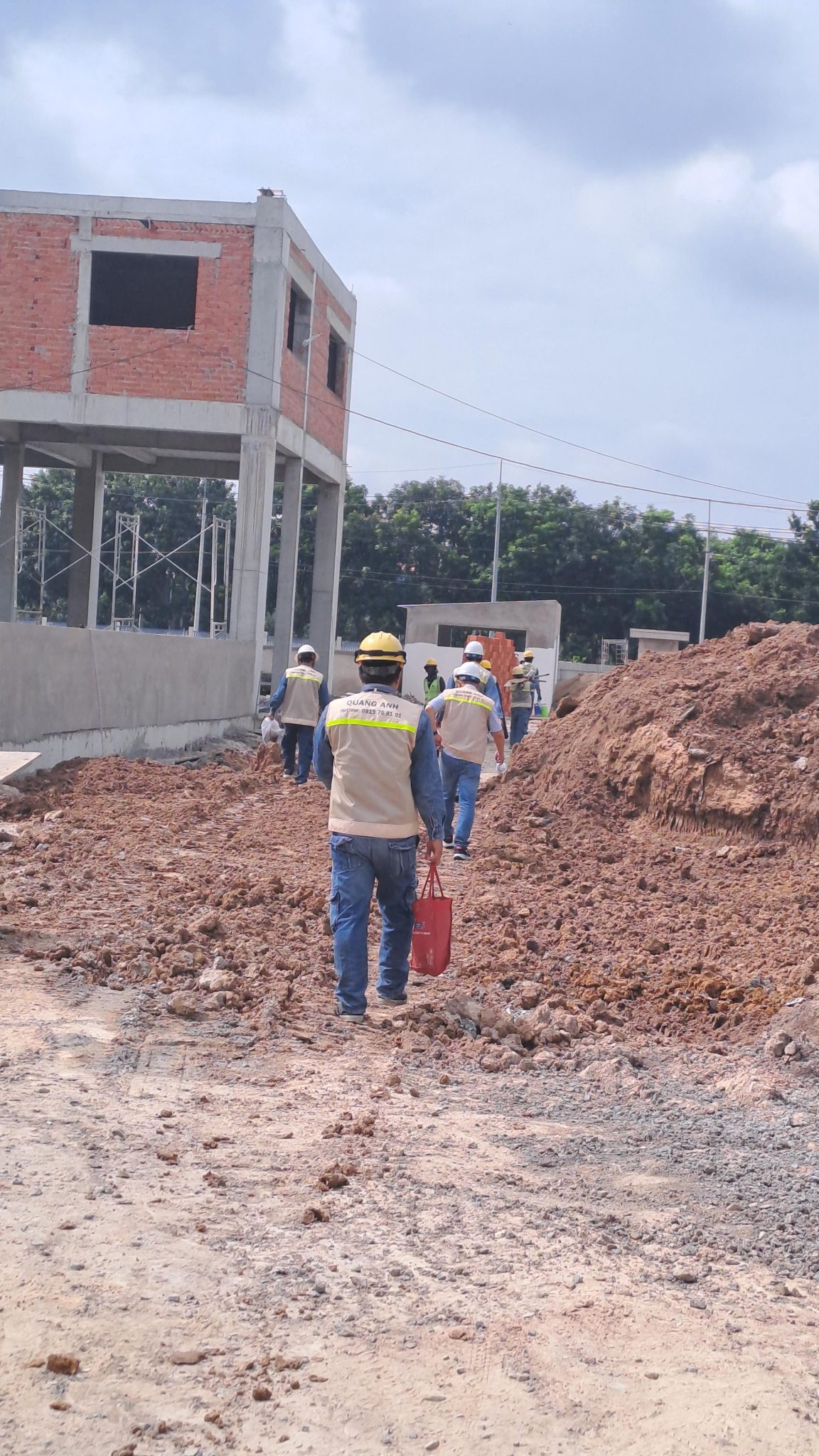
The factory construction process in Vietnam offers various technical and investment benefits. Compliance with standards ensures safety, quality, and long-term operational efficiency, optimizing costs and time for businesses.
Contact QuangAnhcons via Hotline: +84 9 1975 8191 for free consultation on factory construction in Vietnam.
QuangAnhcons provides professional factory construction consulting and execution services, ensuring compliance with technical and legal standards in Vietnam, helping optimize costs and enhance operational efficiency for businesses.

 Tiếng Việt
Tiếng Việt 简体中文
简体中文 Deutsch
Deutsch 日本語
日本語 한국어
한국어 ไทย
ไทย Русский
Русский Français
Français
